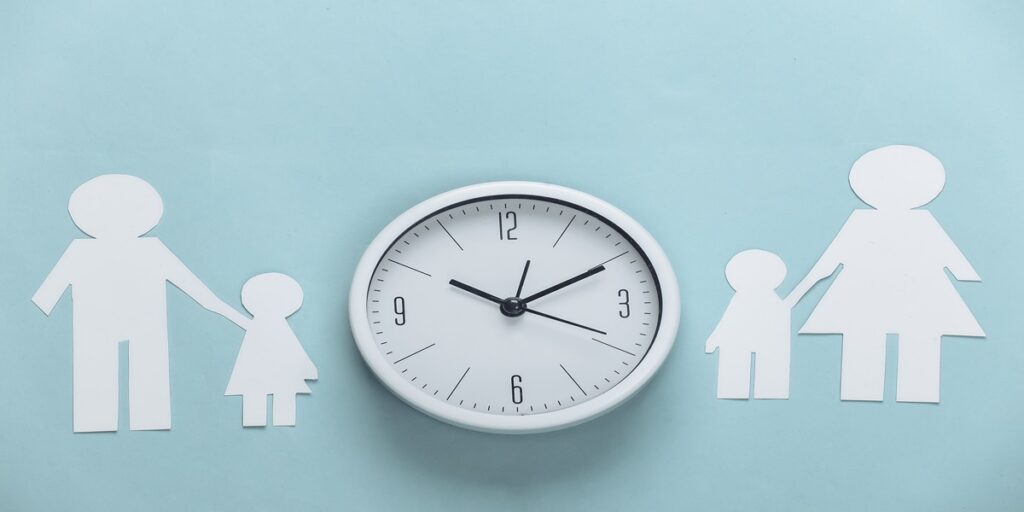
Child Support Modifications in Arizona: A Closer Look at Changing Circumstances
In the world of family law, one of the most hotly debated issues is the modification of child support agreements. Many parents find themselves in situations where the original support order no longer reflects the current realities of their lives or the evolving needs of their children. In Arizona, the legal process for adjusting these agreements is designed to ensure fairness, but the twists and turns of the system can be tricky for anyone trying to figure a path forward.
Over the years, families have witnessed significant changes in their financial situations, parenting time arrangements, or even their children’s evolving needs—changes that often lay the groundwork for a request to modify child support. This opinion editorial aims to provide a neutral, yet detailed, exploration of how a child support modification works in Arizona, while addressing the common scenarios and fine points that come into play when one parent decides to take the wheel and seek an adjustment in the court order.
Defining Child Support Modification: Key Considerations for Arizona Parents
At its core, a child support modification is the legal process by which the amount of child support paid or received is adjusted. This is usually initiated when there has been a substantial change in circumstances since the original order was established. Whether it is a loss of employment, a significant change in income, or adjustments in parenting time between co-parents, these shifts require that the support order be revisited to ensure equity for all parties involved.
In Arizona, both parents have the right to request a modification if they believe that the current support total no longer meets the needs of the child or appropriately matches their earnings. However, the process is not as straightforward as it may seem. The court requires clear documentation and evidence of the change before approving any adjustments, making the process feel overwhelming or even a bit intimidating for those unprepared for its many twists and turns.
It is important for parents to understand that child support orders are not static documents carved in stone. Instead, they are meant to reflect the dynamic nature of family life. When circumstances change in a significant way, the state permits and, at times, necessitates modifications to ensure that the child’s best interests are always the priority.
Proving Significant Change in Family Income and Circumstances
Arguably the most challenging aspect of applying for a child support modification is proving that there has been a notable and substantial change in circumstances. Arizona courts require a solid, fact-based argument to move forward with any adjustments.
Documenting Income Changes
For many parents, job loss or a dramatic change in income is one of the primary reasons to petition for a support modification. When a parent's financial situation plummets due to job loss, reduced working hours, or even a drastic drop in income, the support amount ordered by the court may no longer be feasible or fair.
- Pay Stubs and Tax Returns: Providing up-to-date pay stubs and recent tax returns can offer a clear picture of the parent's earnings before and after the change.
- Employment Termination Notices: In cases where a loss of income is due to job loss, termination letters or unemployment certification can serve as strong documentation.
- Budget Analysis: Maintaining a detailed analysis of monthly expenditures can further support a claim of financial hardship.
By carefully compiling this evidence, parents can help the court understand the subtle details and little twists that have contributed to a significant drop in income. Without this comprehensive documentation, it becomes challenging to convince a judge that an adjustment is necessary.
Demonstrating Shifts in the Child's Needs
A modification request might also be rooted in changes in the child's circumstances. As children grow, their needs frequently evolve, sometimes requiring more support for education, healthcare, or extracurricular activities. Arizona courts consider these shifts crucial when evaluating modifications.
- Medical Records: If a child develops new health issues that require regular care or treatment, medical records and doctor’s reports should be included.
- School Reports: Changes in the child’s academic status or special educational needs can also be documented through school reports or assessments.
- Extra-Curricular Needs: If the child has begun participating in activities that incur additional costs, records of these expenses might be persuasive.
It is important to note that while the evidence might seem like a mixed bag of details, the cumulative impact of these changes can create a compelling case for modification. The key is to present a well-organized account that illustrates how these fine points add up to a significant shift in the overall support requirements.
How to File a Child Support Modification Petition in Arizona
When the time comes to file for a child support modification, the process might appear nerve-racking and even confusing. However, knowing the steps and required documentation can make the experience a lot less overwhelming.
Step-by-Step Guide to Filing for a Modification
Here is a simplified outline of how parents can file for a child support modification in Arizona:
- Prepare Your Documentation: Gather all necessary evidence of income changes, updated financial records, and any documentation regarding changes in the child's needs. This may include bank statements, tax returns, pay stubs, and relevant medical or school documents.
- Draft the Petition: The modification petition should clearly state the nature of the change in circumstances and explain why the current child support order is no longer viable. Be sure to include all supporting documentation with your petition.
- Submit the Petition: File the petition with the court that originally issued the child support order. Note that there may be filing fees, which vary by jurisdiction.
- Attend a Hearing: If your case is contested, you and the other parent might be required to appear before a judge. This hearing provides an opportunity to present your evidence directly and respond to any counterarguments.
- Court Decision: After reviewing all the evidence, the court will decide whether a modification is warranted. The decision will then be formalized into a new child support order.
Each of these steps involves its own set of tricky parts and potentially intimidating procedures, but careful preparation and professional guidance can help ease the process.
The experience is not just about following steps; it is about piecing together a narrative that the court can understand—a narrative that captures the little details of your financial and parental responsibilities, and one that clearly demonstrates why a change is not only justified but necessary.
Common Scenarios Prompting Child Support Adjustments
The circumstances that lead to requests for modifications in child support orders are as diverse as the families affected. Here, we examine some of the most prevalent scenarios that critics often raise when discussing changes to support agreements.
Job Loss or Reduction in Income
Perhaps the most straightforward example is the loss of a job or a significant reduction in hours. Many parents face unexpected unemployment or may experience a downturn in their career. This sudden loss or reduction in income often forces the non-custodial parent to struggle with existing financial obligations, making a case for a lowered support payment.
Key documentation to support this scenario includes:
- Termination notices or letters of resignation.
- Proof of unemployment benefits.
- Recent pay stubs that show the drastic income reduction.
In such scenarios, the court typically looks favorably upon modifications that reflect this sudden and dramatic shift in circumstances, thereby offering some relief to the financially strained parent.
Increased Child Care and Medical Needs
As children grow older, they inevitably face new challenges. It might be in their educational sphere, where additional tutoring or school-related expenses become necessary, or in their health, where medical issues crop up unexpectedly. These scenarios underscore a change in the child’s day-to-day needs and can justify a modification of child support orders.
To support a case based on increased childcare or medical needs, consider including:
- Updated medical records or prescription details.
- School expense receipts or tuition invoices.
- Detailed budgets that outline the increased costs associated with the child's care.
These documents not only highlight the increased financial burden but also provide tangible evidence for the court to consider when reassessing the support amount.
Adjustments in Parenting Time Arrangements
Another common reason for requesting a modification is a significant alteration in the parenting time schedule. If one parent begins to spend considerably more or less time with the child than originally ordered, it stands to reason that the financial responsibilities should reflect this change.
When pursuing a modification based on changes in parental time, ensure that you:
- Present a detailed account of the current versus the original parenting schedule.
- Include any written agreements or court orders that support the claim of changed parenting time.
- Submit any communication between the co-parents that shows how the child’s care has been redistributed.
This evidence helps the court to understand the fine shades and subtle parts of the new parenting schedule, making it easier to adjust the financial obligations accordingly.
The Legal Paraprofessional’s Role in Simplifying the Process
For many, the child support modification process is riddled with tension and confusing bits. In such instances, receiving help from a legal paraprofessional can be a game changer. Firms like Lucas Law have dedicated professionals who can help parents put together their case, prepare the necessary documentation, and even represent them in court.
The benefits of using a legal paraprofessional include:
- Expert Guidance: They can assist you in gathering all the needed financial documents and other proof that show the complicated pieces of your situation.
- Step-by-Step Assistance: Helping you craft the petition and guiding you through each stage of the process makes what might seem like a maze much simpler to navigate.
- Objective Advice: With years of experience, these professionals provide an unbiased view that helps you understand both sides of the issue, ensuring that your case is presented in the strongest possible light.
At the heart of the matter is the importance of ensuring that all aspects of the case, from the little details to the broader financial picture, are thoroughly addressed. Legal paraprofessionals serve as crucial allies in this endeavor, helping resolve those tangled issues so that the court’s decision reflects the current realities of the child’s needs and parental capabilities.
Understanding the Court Process: Steps and Expectations
Once a modification petition is filed, the process moves into the judicial phase—a period that can be both overwhelming and nerve-racking for the parties involved. Much of your day-to-day interactions with the legal system during this time are focused on proving your case with appropriate documentation and presentations.
Preparation and Filing
Before the hearing, careful preparation is key. The modification process typically involves:
| Step | Description |
|---|---|
| Filing the Petition | Submit a detailed modification petition along with all supporting evidence to the issuing court. |
| Documentation Submission | Attach all necessary documents that demonstrate the income changes, altered parenting time, or expanded child care needs. |
| Scheduling a Hearing | A hearing date is set where both parties will present their cases before the judge. |
| Judicial Review | The judge reviews the evidence, considers both parties’ arguments, and finally decides on the modification. |
The table above illustrates the key steps in the modification process, giving parents a visual guide to what can be expected during each phase. Proper organization and record-keeping are super important as even a small oversight in the documentation can delay the hearings or adversely affect the judgment.
During the Hearing: What to Expect
When the case reaches the hearing stage, both parents will face off in a forum where evidence is weighed and arguments made. During the hearing, be prepared for the following:
- Presentation of Evidence: You will have to present your documentation, which may include financial statements, medical records, or notes on the child's changing needs. The key is to make sure every document helps bolster your claim of a significant change in circumstances.
- Cross-Examination: The opposing parent might challenge your evidence, so having organized and indisputable documentation is essential.
- Judge’s Questions: The judge may ask for clarifications to fully gauge whether the current order should be modified. This is the time to stay calm, clear, and factual.
If both parents agree on the modification terms before the hearing, many courts accept a joint petition, potentially avoiding the heated debate of a courtroom. However, even with mutual consent, the judge’s approval remains a must, ensuring that the revised order is in line with state guidelines.
When Co-Parent Disagreements Complicate the Modification Request
Disputes between co-parents over child support adjustments are a common part of the process. When one parent believes that a substantial shift in circumstances—such as changed parenting time—warrants a modification, but the other disagrees, the resolution can get tangled with legal twists and turns.
Handling Disagreements Over Parenting Time
The most common point of contention lies in changes to the parenting schedule. When one parent starts spending significantly more time with the child, it may logically follow that their financial responsibility should adjust accordingly. However, if the co-parent contests the change or its impact on the support calculation, the case has to be argued in court.
Here are a few strategies to manage such disagreements:
- Detailed Parenting Schedule: Prepare a clear, day-by-day account of how parenting time has shifted from the original plan.
- Communication Records: Include any relevant correspondence between you and your co-parent that indicate an agreement—or a dispute—about the current arrangement.
- Third-Party Evidence: Sometimes, statements from childcare providers or third-party observations can help substantiate how the child’s routine has changed.
While this stage of the process may appear off-putting and even nerve-racking, presenting the evidence in an organized fashion significantly increases the likelihood that the court will recognize a significant adjustment in the child’s day-to-day needs.
Legal Considerations and Statutory Guidelines
Arizona law stipulates specific guidelines for calculating child support. These guidelines are intended to serve as a baseline, but the real challenge lies in how they adjust to accommodate the subtle details of a family's circumstances. Some of the statistical and legal keys include:
- The income of each parent.
- The amount of time the child resides with each parent.
- The additional expenses related to child care and special needs.
While these factors might sound like a simple formula on the surface, the hidden complexities arise when they interact with the unpredictable nature of family life. Legal paraprofessionals or specialized firms often help parents steer through these specifics, ensuring that the overall outcome remains fair and balanced for both parties.
Expert Opinions on the Arizona Child Support Modification Process
Many legal experts agree that the overall system is designed to be as fair as possible. However, they also characterize the process as being loaded with issues that require a careful and nuanced approach. Family law cases are rarely straightforward—they often come with a host of tangled issues that make every case uniquely challenging.
Experts stress that maintaining detailed records of all financial changes, parenting arrangements, and changes in the child’s welfare is key. Such records not only serve as personal documentation but also form the backbone of your case when presented in court. It is this preparation that allows the court to take a closer look and make an informed decision based on a full perspective of your family’s current needs.
In many instances, legal paraprofessionals play a critical role in advising parents based on current statistics, historical precedents, and even on their own years of experience handling similar cases. Their insights often make the difference between a case that stalls in the bureaucratic maze and one that reaches a timely and favorable conclusion.
The Role of Legal Paraprofessionals: Making the Process More Manageable
For those traversing the challenging parts of child support modification, a seasoned legal paraprofessional can provide the super important support needed to manage your way through the system. Their role is to break down the process into manageable pieces and explain the underlying legal principles in plain language.
How Legal Paraprofessionals Assist with Modifications
Legal paraprofessionals offer several practical benefits during the modification process:
- Guidance on Documentation: They help you gather the crucial financial documents needed to prove a significant change in circumstances.
- Drafting Assistance: They can assist in drafting the modification petition in a manner that clearly articulates your case.
- Representation at Hearings: Their presence at court hearings can help to minimize confusion and ensure that every fine shade of detail is addressed.
- Strategic Advice: They provide strategies for dealing with co-parent disagreements and advise on the best path forward based on case law and state guidelines.
Working with experienced legal professionals can help smooth out many of the rough edges that characterize these cases. Their support helps alleviate the intimidating feelings often associated with entering a court battle over child support matters.
Steps to Ensure a Successful Modification Request
While the entire process may seem overwhelming or even off-putting at times, there are key steps that any parent considering a modification request should keep in mind. Careful planning and thorough preparation are the cornerstones of a successful petition.
Checklist for Filing a Modification Petition
Below is a simple checklist to help parents ensure that their request is well-prepared and adequately supported:
- Review the Current Order: Read through your existing child support order carefully to understand all its components.
- Assess the Change: Identify exactly what has changed—whether it is income, parenting time, or the child’s needs.
- Collect Evidence: Assemble all relevant documents such as pay stubs, tax returns, medical records, school reports, or any additional financial statements.
- Consult a Professional: Consider speaking with a legal paraprofessional to review your documentation and petition draft.
- Submit the Petition: File the petition along with your supporting evidence at the appropriate court.
- Prepare for a Hearing: Organize your presentation for the hearing, anticipating potential questions and counterarguments.
Adhering to this checklist can reduce much of the confusion and help you put forward a robust case. Each step, from the initial review to the final submission, offers an opportunity to reinforce the argument that a modification is not only justified but necessary given your new circumstances.
Final Thoughts: Balancing Fairness and the Best Interests of the Child
Child support modifications are more than just legal procedures—they are reflections of the constantly evolving nature of family life. While the procedures may be loaded with issues and the process may feature many confusing bits, at its heart, the entire system is designed to serve the best interests of the child. Each adjustment made by the court is meant to ensure that financial responsibilities remain aligned with both the child's welfare and the parents’ capabilities.
It is essential for parents to approach the process with as much preparation as possible, understanding that the underlying goal is not to create additional burdens but to adjust existing obligations to better match the new realities in family life. Whether it’s due to a dramatic change in income, an increased need for child care due to medical or educational reasons, or a modified parenting time schedule, demonstrating a significant change in circumstances is key to a successful modification.
Ultimately, the goal is to strike a balance—a balance that honors the financial contributions of both parents while ensuring that the child receives the support they need to flourish. By carefully compiling evidence, following procedural steps, and possibly consulting legal paraprofessionals, parents can effectively manage the twists and turns of this legal terrain and secure a support arrangement that reflects their current circumstances.
Conclusion: Embracing Change with Informed Legal Support
In conclusion, the journey through child support modifications in Arizona can be daunting, filled with tangled issues and nerve-racking moments. However, with detailed preparation and expert assistance, parents can improve their chances of achieving a fair outcome. It is super important to remember that changes in your child’s needs, your own income, or the amount of parenting time can provide solid ground for a modification petition.
By taking advantage of the well-established legal channels and seeking the guidance of experienced legal paraprofessionals, you can ensure that every little detail is handled with care. This thoughtful approach not only relieves the immediate financial pressure but also helps in constructing a support agreement that is in tune with the realities of a growing family.
As we observe the evolving landscape of family law, it becomes clear that flexibility and informed legal advocacy are essential. Parents who proactively gather evidence, understand the legal process, and manage the interplay of various factors are best positioned to secure a support arrangement that serves their family’s best interests. In a field replete with confusing bits and complicated pieces, the focus must always remain on the child’s well-being and fairness for both parties.
The critical steps outlined in this editorial—from gathering documentation to preparing for court hearings—are indispensable resources for parents in this challenging process. Whether your change in circumstances is significant or more subtle, making your case with clarity and precise evidence is the surest path to success.
For those feeling overwhelmed by the daunting parts of the legal system, rest assured that expert legal support is available. Firms like Lucas Law, backed by experienced legal paraprofessionals, can help steer you through the maze of legal requirements and make your petition as persuasive as possible. Their role in making sense of the fine points of your case and guiding you through each step cannot be overstated.
Ultimately, a child support modification is not just a legal adjustment—it is a necessary recalibration to ensure that despite shifts in income, parenting time, or the child’s needs, every child continues to receive the support they deserve. By working through the process step by step, parents can not only adapt to new challenges but also secure a better future for their families.
The path to a fair and balanced support order may be full of twists and turns, but with thorough preparation, clear communication, and skilled legal assistance, you can confidently tackle the challenges ahead. The legal journey may be intimidating at times, yet every effort made is a stepping stone toward ensuring that financial responsibilities are aligned with the latest realities of your family's life.
As public sentiment around family law issues continues to evolve, so too does the need for clear, practical solutions that accommodate the unpredictable nature of modern life. By taking a proactive, well-informed approach, parents can safeguard their financial interests, meet their obligations, and, most importantly, secure a better for their children.
In our ever-changing legal landscape, it is essential to remember that every modification request is a testament to the dynamic nature of family life—a reminder that as circumstances change, so must our legal arrangements. Embrace this change with the knowledge that you are not alone in this journey, and that the legal tools at your disposal are designed to protect both you and the children you care for.
For any parent considering a child support modification, the advice is to prepare diligently, seek expert guidance when needed, and always keep the best interests of the child in mind. In doing so, you will find your way through the maze of legal requirements and secure a support agreement that truly reflects the current needs of your family.
Read more about this topic at https://lucaslawaz.com/child-support-modifications-proving-a-significant-change-in-circumstances/
Related articles you might like
Request a Modification | HFS
Illinois- child support modification HELP! : r/FamilyLaw


